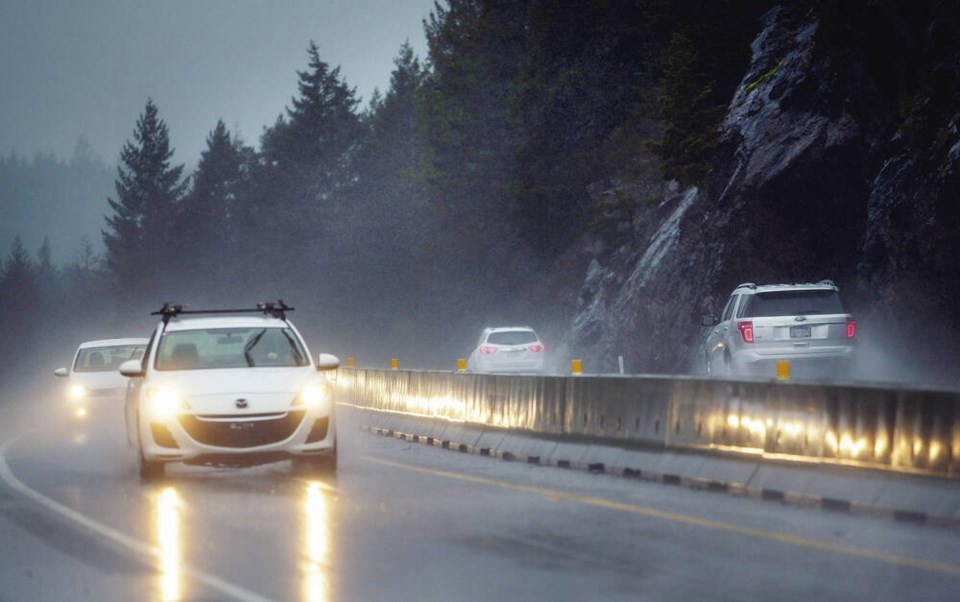A commentary by a Central Saanich resident who teaches at UBC and has performed research in the Transport Studies Unit at the University of Oxford.
Comments by retired transportation consultant Chris Foord regarding the Malahat Highway make me wonder: Does he know why the storm undermined the highway, and why it will happen again?
If so, why would we build yet more infrastructure that contributes to the problem?
More explicitly, if automobility, alongside air travel, has been a key contributor to climate change and its disasters, including the compromise of the highway, expanding automobility with yet another expensive highway seems like an almost impossible level of denial. Myopically obsessing over adaptation without considering the mitigation needed to avoid escalating hazards is foolish.
But aren’t big highways also needed for “clean” electric cars? Electric cars seem to have become the hoped-for silver bullet for climate change in the minds of politicians, the media and the public.
But they are on their own insufficient to deal with this singular existential challenge. See, for instance, my Oxford colleague Dr. Christian Brand’s recent article in The Conversation, “Cycling is ten times more important than electric cars for reaching net-zero cities” as a starting point.
Regardless of source of propulsion, the high-speed two-tonne box also perpetuates other environmental and social problems in the form of human and animal deaths and injury, metabolic diseases, habitat destruction (species loss is itself another existential threat to humanity), community divisions and high levels of energy consumption.
Wind, solar and hydro cannot on their own — and without further environmental impacts — produce the amount of energy needed to justly propel the world’s population of almost eight billion people by automobile.
This is not to discredit and dismiss electric vehicles (some of which are cycles), but to emphasize the need to diversify sustainable transport options, particularly rail, cycling and walking.
Some larger considerations are often overlooked in the debates that have again arisen over whether to re-introduce passenger rail travel to Vancouver Island.
Most significant is the current and future growth in population on the southern Island. It’s a fact that most of the southeastern quarter of Vancouver Island, bounded by a line from just west of Sooke up to Strathcona Park and Campbell River, is privately owned, largely by logging companies.
This is a product of the “Dunsmuir Land Grab,” i.e. the E&N Railroad Land Grant of 1883 (not to mention the colonial land grab). The Yellowpoint Ecological Society has some decent maps representing this on their website.
This is one of the largest contiguous chunks of privately owned land in the province. Within the past decade one of the companies, Timberwest, has already slated tens of thousands of hectares for development.
The global population needs somewhere to live, and the “haves” among them want somewhere nice and safe, like Vancouver Island.
In the near future, the southeast quarter will be thick with dwellings and people needing or wanting to move around beyond their hopefully walkable and cyclable neighbourhoods. They can do this by car, bus or train, and each comes with a different constellation of impact on the environment and on others.
I am not under the illusion that the existing E&N rail infrastructure is sufficient to deal with the growing levels of transport demand on the island.
I understand that it cannot support the rapidity and bi-directionality of travel needed to provide an adequate alternative for large numbers of people.
Damage to rail from climate-change events is also a consideration. Perhaps Foord’s alternative highway route would be better overlaid with new northbound and southbound rails. Expensive? Yes, but totally recoverable given population growth.
In his promotion of buses, Todd Litman has questioned whether train and rapid transit are equitable. This is an important issue to raise.
My sense and hope are that broad public support for and patronage of rail alternatives — the Canada Line in Vancouver was underbuilt for the demand — will precipitate equitable subsidies for disadvantaged groups who also deserve the more enjoyable embodied experience of train travel alongside the well-to-do.
Careful selection of routing and stops to service both high- and low-income communities will also be key.



